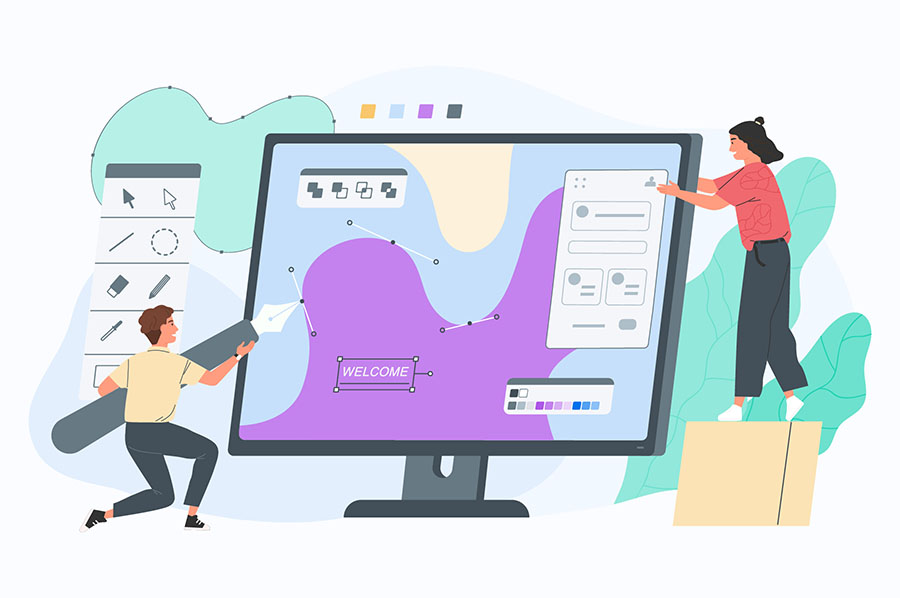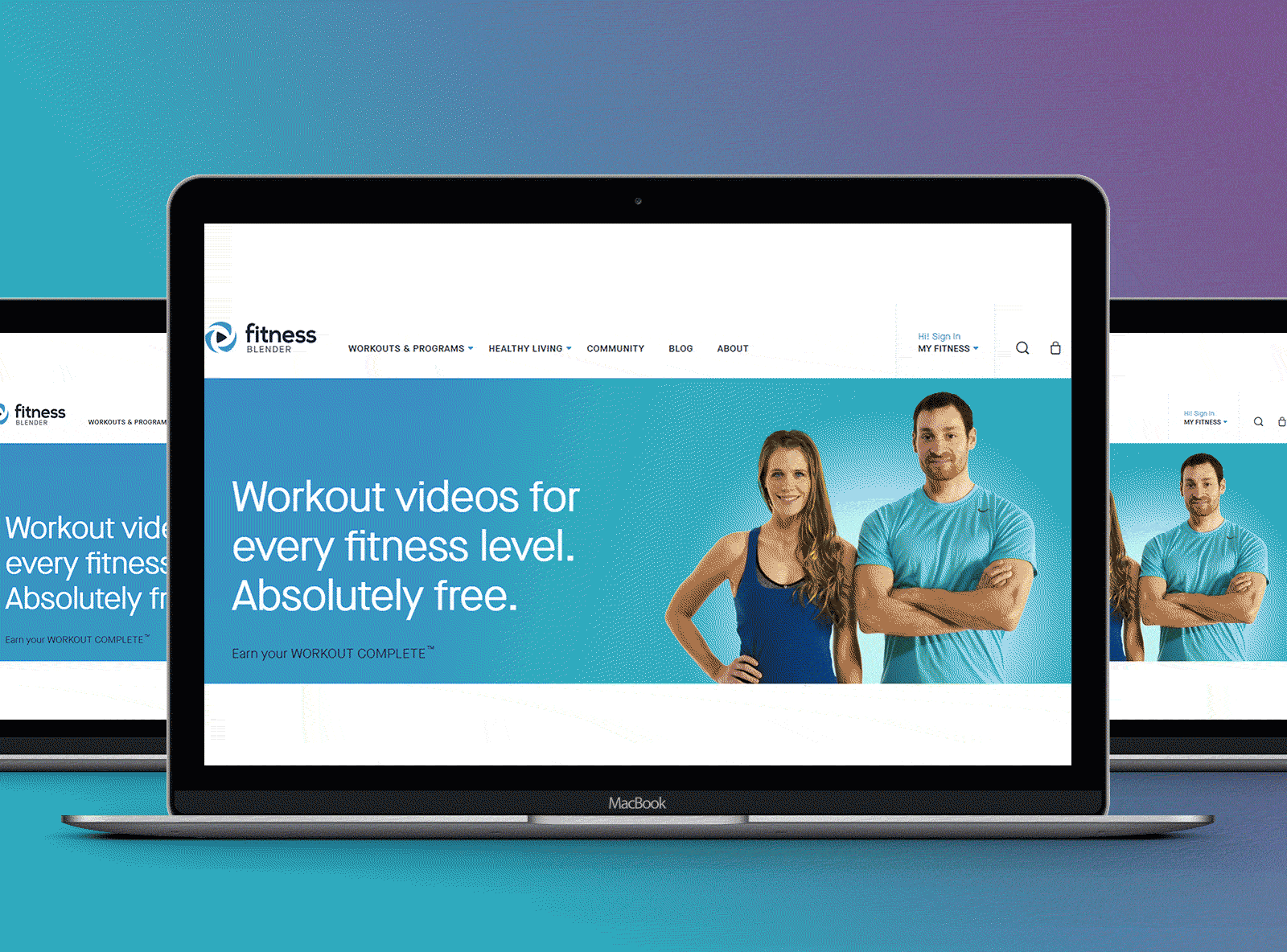Discover the Conveniences of Custom-made Web Design Johannesburg Solutions
Wiki Article
Discovering the Essential Concepts and Best Practices of Reliable Web Design for Boosted Individual Experience and Involvement

Importance of User-Centered Style
User-centered style (UCD) functions as a keystone of efficient web design, emphasizing the requirement of customizing digital experiences to meet the needs and preferences of customers. By focusing on the customer's point of view, UCD makes certain that internet sites are not only functional yet interesting and likewise instinctive.The importance of UCD depends on its capability to improve user contentment and retention. When users discover a site easy to browse and straightened with their assumptions, they are extra likely to return and advise it to others. This approach fosters a much deeper psychological connection, allowing brand names to construct trust and loyalty among their audience.
Moreover, UCD promotes the identification of individual discomfort factors via research and testing, enabling developers to attend to these concerns proactively. By entailing individuals in the design procedure, whether with meetings, surveys, or use screening, designers gain valuable insights that inform much better decision-making.
Eventually, the execution of UCD not just improves the general individual experience but also drives quantifiable organization results. Web sites that accept user-centered methodologies tend to see greater conversion rates and improved efficiency metrics, highlighting the vital role of UCD in modern-day internet layout.
Secret Layout Concepts
Reliable web style is based in vital design principles that boost usability and aesthetic charm, further building on the structure established by user-centered layout. These principles consist of consistency, aesthetic power structure, and feedback, which together create an user-friendly customer experience.This experience helps individuals browse and comprehend the interface with ease, enhancing brand identity. Visual hierarchy, attained through shade, size, and positioning, overviews customers' focus to the most important content, making info a lot more obtainable and interesting.

Incorporating these key design concepts cultivates a harmonious blend of functionality and appearances, inevitably causing enhanced user satisfaction and interaction. By sticking to these foundational ideas, designers can develop internet sites that not only look enticing yet likewise provide a delightful and efficient individual experience.
Ideal Practices for Usability
Use is a foundation of successful website design, including an array of methods that boost the total experience for users. To achieve optimum usability, it is essential to focus on intuitive navigation. Sensible pathways and clear menus enable users to discover details promptly, decreasing irritation and raising fulfillment.Furthermore, employing regular design aspects, such as color systems and typography, cultivates familiarity and alleviates navigation. Users ought to not have to relearn exactly how to interact with different areas of the site. Furthermore, guaranteeing that your internet site is receptive throughout numerous gadgets is critical, as a boosting variety of individuals gain access to content on smart phones.
An additional ideal technique includes incorporating accessibility functions, such as alt message for images and keyboard navigation alternatives, to fit customers with diverse demands. Checking use with user feedback is indispensable, as real-world understandings can expose unexpected issues and areas for improvement.
Enhancing Visual Power Structure
A well-defined visual power structure is essential for directing users through an internet site, permitting them to swiftly recognize the importance of various elements on a page. This can be attained via the strategic use of size, comparison, color, and spacing (web design Johannesburg). Bigger elements naturally attract focus initially, making headings or crucial phone call to activity extra prominentColor can additionally play a considerable role in establishing pecking order; for example, making use of a vibrant shade for buttons can aid them stand out against an extra soft history. Furthermore, comparison in between message and background is crucial for readability, making certain that users can easily browse content without strain.
Whitespace, or negative space, is another important element of visual pecking order. It provides breathing space around components, aiding to group related items and guiding the individual's eye from one section to one more. By effectively utilizing these design principles, web designers can produce a smooth individual experience that improves interaction and minimizes cognitive tons.
Eventually, a thoughtfully created aesthetic power structure not just boosts use however also promotes a more instinctive interaction with the web site, bring about greater fulfillment and retention prices among customers.
Receptive and Adaptive Design
Visual power structure plays a substantial function in user experience, and its effectiveness needs to prolong throughout numerous tools and display dimensions. Responsive style employs liquid grids, adaptable pictures, and media questions to adjust the format and content dynamically, making certain that customers enjoy a seamless experience regardless of the device.On the other hand, adaptive design makes use of distinctive layouts customized to certain display sizes. By spotting the customer's device and offering a maximized design, flexible view it now design can offer an extra personalized experience. However, this typically needs multiple versions of the same web content, which can complicate administration and increase advancement time.
Both methods have their advantages, and the choice in between them depends upon task demands, target market, and source schedule. Eventually, the objective is to produce an interesting, straightforward user interface that maintains visual pecking order and usability throughout all platforms. A well-implemented receptive or adaptive style not only improves user experience yet also urges higher engagement and retention rates, essential for the success of any kind of internet task.
Final Thought
Finally, reliable website design pivots on the combination of user-centered principles and ideal practices that boost total experience and engagement. By prioritizing functionality through intuitive navigating, aesthetic pecking order, and responsive formats, developers can create systems that accommodate varied individual requirements. The consolidation of ease of access functions and regular design components guarantees a smooth communication across devices. Emphasizing individual comments and visual factors to consider ultimately promotes contentment, retention, and improved performance in the electronic landscape.In the click for more info rapidly progressing digital landscape, recognizing the essential principles and best techniques of reliable internet style is vital for cultivating Read More Here boosted customer experience and engagement - web design Johannesburg.Usability is a cornerstone of successful web style, incorporating a variety of methods that improve the total experience for individuals. By effectively using these layout principles, web developers can create a smooth user experience that enhances engagement and lowers cognitive load
Responsive layout utilizes fluid grids, adaptable pictures, and media inquiries to readjust the format and material dynamically, making certain that users delight in a smooth experience no matter of the device. A well-implemented responsive or flexible layout not just enhances user experience but additionally urges higher interaction and retention rates, crucial for the success of any web job.
Report this wiki page